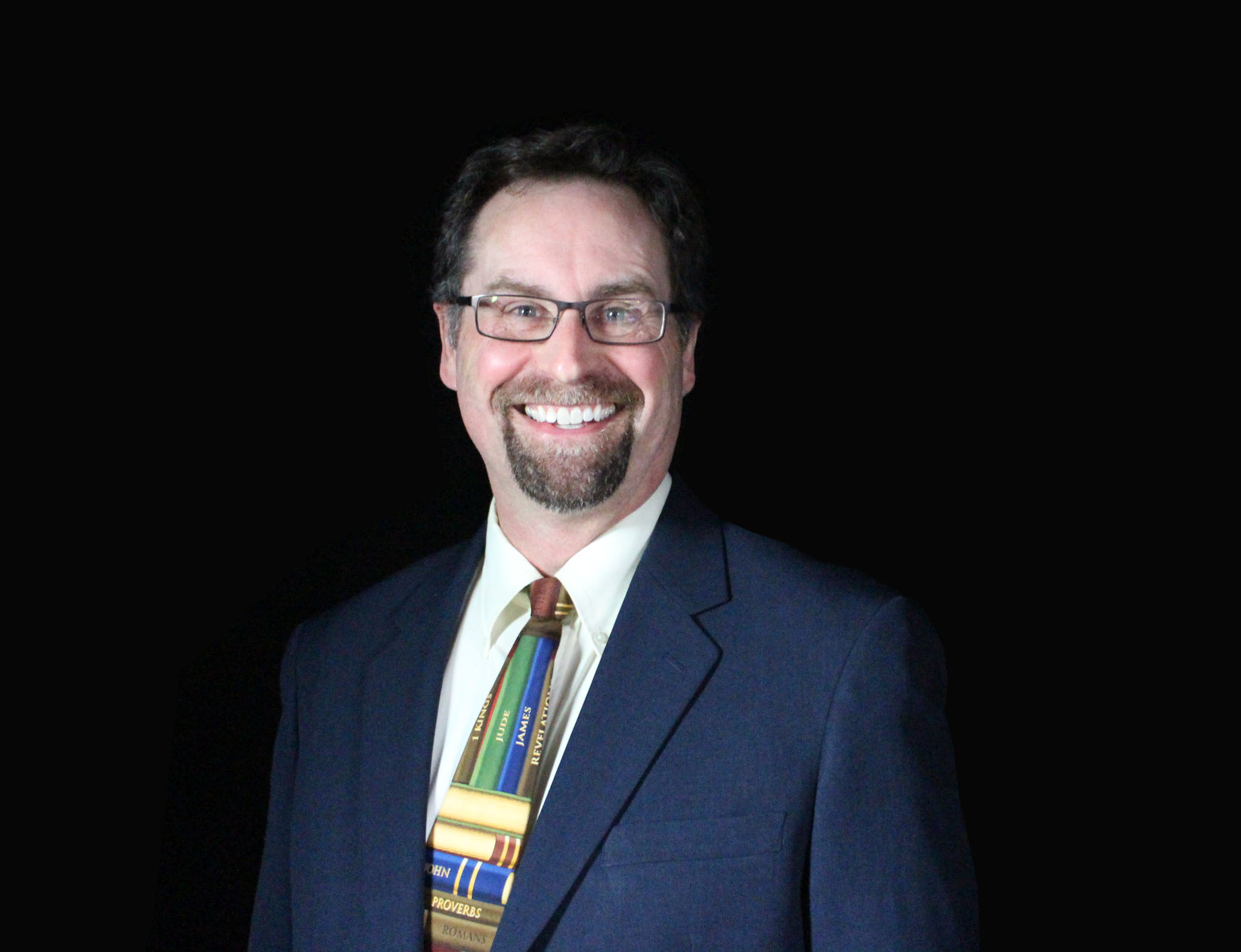The materialist ideals of the Greeks manifested in the rejection of a supernatural source
for the Bible. And, the argument went, if those books were not inspired, then the words in
them were free to be reinterpreted or discarded based on human reason.
Likewise, supernatural experiences were open to interpretation based on human wisdom,
without being filtered through comparison to the Word of God. This resulted in the odd mix
of science and spiritism that is the legacy of Emanuel Swedenborg, an 18 th century Swedish
scientist, philosopher, and mystic. He was undoubtedly brilliant, but sometimes the brilliant
are blinded by their own light.
Swedenborg’s theology encompasses the following concepts:
• The Bible is the Word of God; however, its true meaning differs greatly from its
obvious meaning. Furthermore, he and only he, via the help of Angels, was in the
position to shed light upon the true meaning and message of the Scriptures.
• Swedenborg believed that the world of matter is a laboratory for the soul, where
the material is used to “force-refine” the spiritual.
• In many ways, Swedenborg was quite universal in his concepts, for he believed
that all religious systems have their divine duty and purpose and that this is not
the sole virtue of Christianity.
• Swedenborg believed that the mission of the Church is necessary inasmuch as,
left to his or her own devices, humanity simply cannot work out its relationship to
God.
• He saw the real power of Christ’s life in the example it gave to others and
vehemently rejected the concept of Christian atonement and original sin. 1
Swedenborg believed the angels who contacted him lived elsewhere in the solar system.
To this day, the Swedenborg Foundation offers a modern translation of the mystic’s 1758
work Life on Other Planets, a book that “details Swedenborg’s conversations with spirits
from Jupiter, Mars, Mercury, Saturn, Venus, and the moon, who discuss their lives on other
planets and how their cultures differed from those of earthly life.” 2 Swedenborg’s teachings
on spiritism and angelic ETIs are still around, although rebranded as The New Church.
It’s a small sect, maybe 10,000 worldwide, but is the idea of angels on Jupiter
communicating through visions any stranger than ETIs from “the contiguous universe”
sending messages for the president of the United States through a retired NASA astronaut?
No, it is not. And that really happened. (See the Wikileaks release of John Podesta’s
emails—Dr. Edgar Mitchell, sixth man to walk on the moon, was convinced that “celestials”
from “a nonviolent contiguous universe” were trying to get in touch with President Obama.) 3
Of course, Swedenborg, who died in 1772, wasn’t the last word in the rise of mystic
scientism. Others with a belief in the link between humanity and life from the stars included
Joseph Smith, who founded Mormonism about fifty years after Swedenborg’s death. The
cosmology developed by Smith included the existence of many worlds. God to Smith was
flesh and blood, 4 formerly a mortal man who’d earned godhood and, apparently, the right to
create multiple earths.
29 And [Moses] beheld many lands; and each land was called earth, and there were
inhabitants on the face thereof.
30 And it came to pass that Moses called upon God, saying: Tell me, I pray thee, why
these things are so, and by what thou madest them?
31 And behold, the glory of the Lord was upon Moses, so that Moses stood in the
presence of God, and talked with him face to face. And the Lord God said unto
Moses: For mine own purpose have I made these things. Here is wisdom and it
remaineth in me.
32 And by the word of my power, have I created them, which is mine Only Begotten
Son, who is full of grace and truth.
33 And worlds without number have I created; and I also created them for mine own
purpose; and by the Son I created them, which is mine Only Begotten.
34 And the first man of all men have I called Adam, which is many. 5
A full analysis of the Church of Latter Day Saints is more than we can tackle in this
book, but just consider: A two-hundred-year-old religion that claims 15 million
adherents—one of whom, Mitt Romney, might have been president of the United
States—officially teaches that there are many inhabited earths scattered throughout the
universe. As we’ll see, the Mormon church isn’t the only one that blends its theology with a
belief in extraterrestrial life.
Beginning with the Second Great Awakening in the 1790s, which was itself a reaction to
the rationalism and deism of the Enlightenment, 19 th century America saw successive waves
of spiritual movements roll across the United States, spreading from east to west like
supernatural tsunamis. A series of revivals, cults, and camp meetings followed European
settlers westward as the country grew and prospered. The raw, unspoiled nature of the
frontier contributed to a desire to restore Christianity to a purer form, free from the formality
and hierarchy of the churches of Europe.
The Second Great Awakening, which swelled the numbers of Baptists and Methodists
especially, peaked by the middle of the 19 th century, but other spiritual movements followed
close behind. The spiritualist movement, which emerged from the same region of western
New York state that produced Joseph Smith and the Church of Latter-Day Saints, the so-
called Burned-over District, first appeared in the late 1840s. Sisters Kate and Margaret Fox,
ages 12 and 15, claimed to communicate with spirits through coded knocks or “rappings.”
They convinced their 17-year-old sister, Leah (or brought her in on the gag), who took charge
of the younger two and managed their careers for years.
The Fox sisters not only enjoyed long careers as mediums, they left a legacy that
continues to this day in the work of television mediums like John Edward, Theresa Caputo,
and Tyler Henry. In fact, as we’ll discuss in a later chapter, communications from
disembodied spirits is a much larger part of the modern UFO movement than serious
researchers are comfortable with. And this, despite the fact that Margaret and Kate admitted
in 1888 that they’d invented the whole thing:
“That I have been chiefly instrumental in perpetrating the fraud of Spiritualism upon
a too-confiding public, most of you doubtless know. The greatest sorrow in my life
has been that this is true, and though it has come late in my day, I am now prepared to
tell the truth, the whole truth, and nothing but the truth, so help me God! . . I am here
tonight as one of the founders of Spiritualism to denounce it as an absolute falsehood
from beginning to end, as the flimsiest of superstitions, the most wicked blasphemy
known to the world.” 6
The Fox sisters used a variety of techniques to produce the sounds that fooled gullible
audiences into believing that spirits answered their questions, one of which was simply
cracking their toe joints. 7 But even after their confession was published by a New York City
newspaper, the spiritualist movement never skipped a beat. To this day, “many accounts of
the Fox sisters leave out their confession of fraud and present the rappings as genuine
manifestations of the spirit world.” 8
In other words, the movement lives on even though its founders admitted their act was as
real as professional wrestling.
Why were Americans and Brits, who likewise flocked to stage shows featuring mediums
and psychics, so eager to believe? Scholars speculate that the Industrial Revolution led
people to explore spiritual frontiers to find meaning in rapidly changing lives. 9 Its quick
adoption by prominent Quakers in New York tied the Spiritualist movement to several radical
religious causes, including abolition (which may be why it never caught on widely in the
South) and women’s rights.
Whatever the cause of its popularity, the Spiritualist movement continued into the 20 th
century and attracted some well-known believers. Sir Arthur Conan Doyle, the creator of
Sherlock Holmes, was one; in fact, Doyle wrote The History of Spiritualism in 1926, and he
pegged March 31, 1848—the very first time Kate and Margaret Fox claimed to hear from
spirits—as the date the movement began.
By the fourth quarter of the 19 th century, the Spiritualist movement was joined on the
spiritual scene by the new Theosophist movement, a blend of Eastern and Western mystical
traditions that found fertile ground among urban elites. Following the lead of their founder,
Theosophists saw Spiritualism as unsophisticated and provincial. For their part, “Spiritualists
rejected Theosophy as unscientific occultism.” 10
The founder of Theosophy, Helena Petrovna Blavatsky, is an enigmatic character, partly
because it’s difficult to confirm much of what she said and wrote about herself.
According to the official histories, she was the daughter of a Russian-German nobleman
who traveled widely across Europe and Asia in the 1850s and 1860s. By cobbling together
traditions cribbed from Eastern sources, Blavatsky laid the foundation for the modern UFO
phenomenon and ET disclosure movement.
Entire books have been devoted to the life and claims of Madame Blavatsky, and we
don’t have time or space here to dig deeply into the material. There’s a lot of ground to cover
before we get to the index, so we’re only going to scratch enough of the surface to show why
Blavatsky’s strain of spiritual thought is important to the modern UFO phenomenon.
Blavatsky acknowledged the existence of Spiritualist phenomena but denied that
mediums were contacting spirits of the dead. Madame Blavatsky taught that God is a
“Universal Divine Principle, the root of All, from which all proceeds, and within which all
shall be absorbed at the end of the great cycle of Being.” 11 If you catch the Eastern flavor of
her teachings, you’re right—Madame Blavatsky wove Hindu and Buddhist concepts into her
philosophy, and it’s claimed that she and Henry Steel Olcott, with whom she founded the
Theosophical Society in New York City in 1875, were the first Western converts to
Buddhism. The success of Theosophy in the U.S. and U.K. did much to spread Eastern
mysticism in the West, and the New Age Movement owes a debt to Helena Blavatsky.
Through her most famous books, Isis Unveiled, published in 1877, and her magnum
opus, The Secret Doctrine, published in 1888, Blavatsky attracted international attention to
her society and its goal of uniting the world in brotherhood by blending the philosophies of
East and West through the study of comparative religion, philosophy, and science. 12
In The Secret Doctrine, which Blavatsky claimed was channeled from a prehistoric work
called The Book of Dzyan (which critics accused her of cribbing without credit from other
sources, including the Sanskrit Rigveda), she wrote that “Lemuria was the homeland of
humanity, the place of the first creation. Further, there were to be seven Root Races ruling the
Earth in succession, of which humanity today was only the fifth. The fourth of these races
were the Atlanteans, who were destroyed by black magic. Lemuria would rise and fall to
spawn new races until the Seventh Root Race, perfect in every way, would take its rightful
place as master of the world.” 13
Who, you ask, were the Atlanteans, and what is Lemuria? In the 19 th century, this odd
marriage of Spiritualism and Modernism gave rise to competing claims that humanity was
either evolving or devolving. Spiritualists accepted Darwinian evolution because it supported
their belief in the continued development of the spirit after death. Blavatsky and her
followers, on the other hand, believed that humanity had left behind a golden age that
collapsed when Atlantis fell beneath the waves.
Lemuria, like Atlantis, was another lost continent that was believed to be submerged
somewhere in the Pacific or Indian Oceans. It got its name in 1864 when zoologist Philip
Sclater noticed that certain primate fossils existed in Madagascar and India, but not in Africa
or the Middle East. Sclater postulated a lost continent that connected Madagascar and India
to account for the lemur fossils—hence Lemuria. No kidding.
While the possible existence of Lemuria was dropped by the scientific community when
plate tectonics and continental drift caught on, the lost continent was kept alive by the
imagination and teachings of pseudo-scientists and spiritual leaders like Helena Blavatsky.
Mysterious symbols, tragic history, and memories of a glorious, golden past transmitted
by disembodied Masters via “astral clairvoyance” to Blavatsky (and later Theosophists like
C.W. Leadbeater) apparently stirred something in the hearts of those who read The Secret
Doctrine. With nothing but the force of her powerful will, Madame Helena Blavatsky
convinced thousands that the history they’d been taught was a lie, and that humanity’s future
was to return to the golden age that was lost when Atlantis slipped beneath the waves.
To put it simply, in Theosophy Helena Blavatsky gave the world a religious faith in
human evolution as an integral part of cosmic evolution. The goal was perfection and
conscious participation in the evolutionary process—self-directed evolution, a concept that
spurred the Eugenics movement of the late 19 th and early 20 th centuries (and, although they
don’t admit it, today’s Transhumanist movement). Blavatsky taught that this process was
overseen by the Masters of the Ancient Wisdom, a hierarchy of spiritual beings who’d been
guiding humanity’s development for millennia.
From a Christian perspective, it’s easy to recognize the deception embodied by the
doctrines of Theosophy. While Blavatsky’s critics accused her of inventing her faith out of
whole cloth, a discerning follower of Jesus Christ can recognize some common lies:
Humanity is the product of random evolutionary chance; we once enjoyed a golden age when
we lived like gods; and our destiny is to regain that exalted status through proper spiritual
discipline, ultimately to become one with God and the cosmos. This describes a common
belief system that Dr. Peter Jones calls “one-ism.” 14
Obviously, this is fundamentally at odds with the Christian faith, which recognizes above
all that we are most definitely not God. But the idea that we contain with us the spark of
divinity is appealing. It’s a good lie.
In fact, it’s literally the oldest lie in the Book: “Ye shall be as gods.”
1 Rev. Simeon Stefanidakis, “Forerunners to Modern Spiritualism: Emanuel Swedenborg (1688-1772),
http://www.fst.org/spirit2.htm, retrieved 7/25/17.
2 http://www.swedenborg.com/product/life-planets/, retrieved 7/25/17.
3 Siemasko, Corky. “Clinton Campaign Chief John Podesta’s Interest in UFOs is Out of This World.” NBC News,
Oct. 31, 2016. https://www.nbcnews.com/news/us-news/clinton-campaign-chief-john-podesta-s-interest-ufos-out-
world-n674711, retrieved 9/20/22.
4 Doctrine and Covenants 130:22. https://www.lds.org/scriptures/dc-testament/dc/130.22?lang=eng#21, retrieved
7/30/17.
5 The Pearl of Great Price, Moses 1:29-34. https://www.lds.org/scriptures/pgp/moses/1.29-34?lang=eng#28,
retrieved 7/30/17.
6 Margaret Fox Kane, quoted in Davenport, Reuben Briggs. The Deathblow to Spiritualism. New York: G.W.
Dillingham, 1888, pp. 75-76.
7 Ibid., p. 77.
8 Zusne, Leonard; Jones, Warren. (1989). Anomalistic Psychology: A Study of Magical Thinking. Lawrence Erlbaum
Associates. p. 212.
9 Carroll, Bret E. The Routledge historical atlas of religion in America. New York: Routledge, 2000, p. 74.
10 Hess, David J. Science in the New Age: the paranormal, its defenders and debunkers, and American culture.
Madison, WI: University of Wisconsin Press, 1993, p. 20.
11 Blavatsky, Helena P. The Key to Theosophy. London: Theosophical Publishing Society, 1889, p. 43.
12 Kuhn, Alvin Boyd. Theosophy: A Modern Revival of Ancient Wisdom. (PhD thesis). American religion series:
Studies in religion and culture. Whitefish, MT: Kessinger Publishing, 1992 (originally published 1930), pp. 63-64.
13 Colavito, Jason. The Cult of Alien Gods: H.P. Lovecraft And Extraterrestial Pop Culture (Kindle Locations 364-
366). Kindle Edition.
14 https://truthxchange.com/about-2/vision/, retrieved 8/8/17.

Derek Gilbert Bio
Derek P. Gilbert hosts SkyWatchTV, a Christian television program that airs on several national networks, the long-running interview podcast A View from the Bunker, and co-hosts SciFriday, a weekly television program that analyzes science news with his wife, author Sharon K. Gilbert.
Before joining SkyWatchTV in 2015, his secular broadcasting career spanned more than 25 years with stops at radio stations in Philadelphia, Saint Louis, Little Rock, and suburban Chicago.
Derek is a Christian, a husband and a father. He’s been a regular speaker at Bible prophecy conferences in recent years. Derek’s most recent book is The Great Inception: Satan’s PSYOPs from Eden to Armageddon. He has also published the novels The God Conspiracy and Iron Dragons, and he’s a contributing author to the nonfiction anthologies God’s Ghostbusters, Blood on the Altar, I Predict: What 12 Global Experts Believe You Will See by 2025, and When Once We Were a Nation.





Leave a Reply
Want to join the discussion?Feel free to contribute!